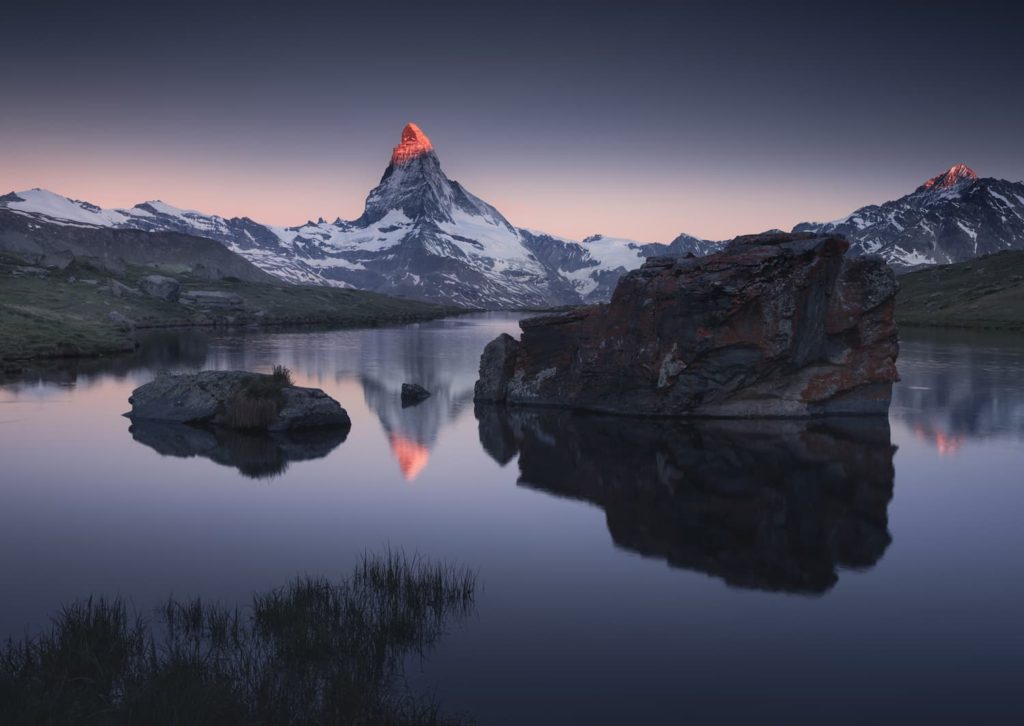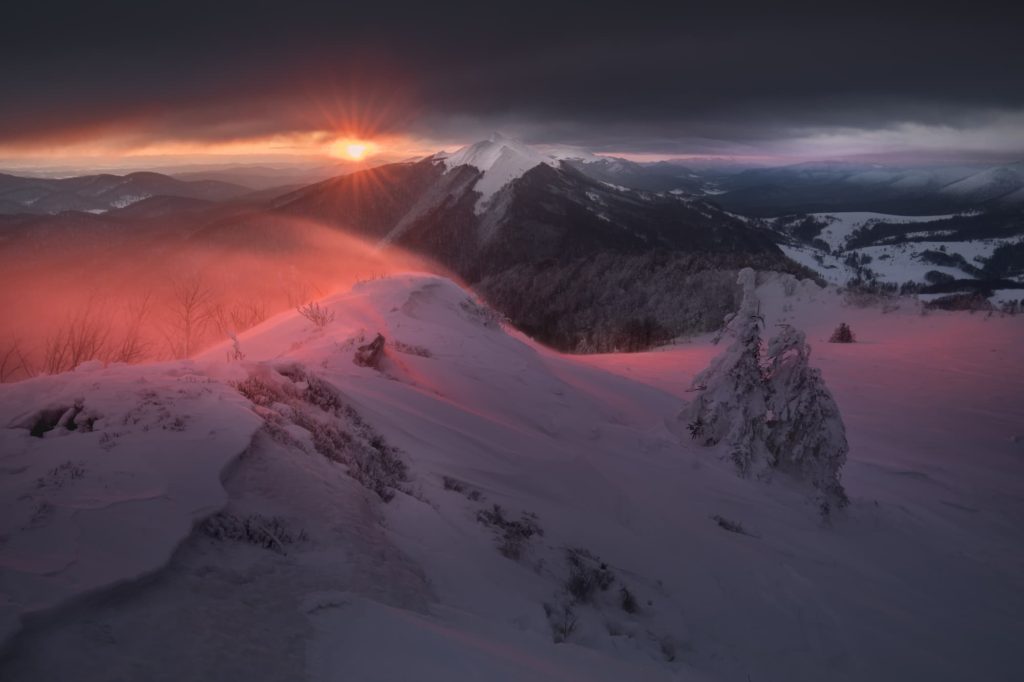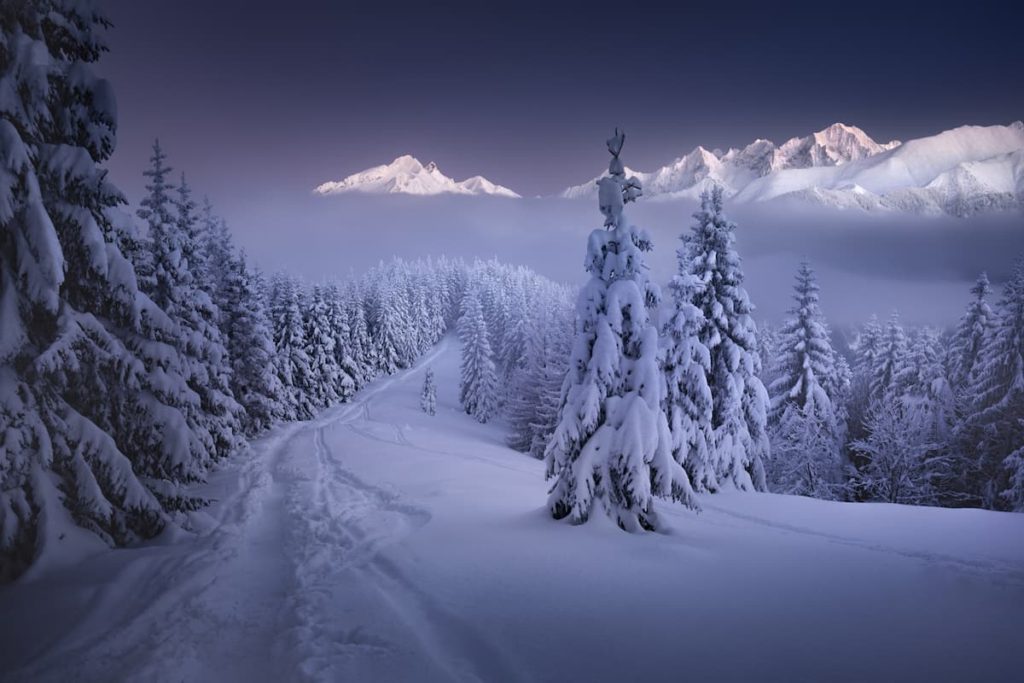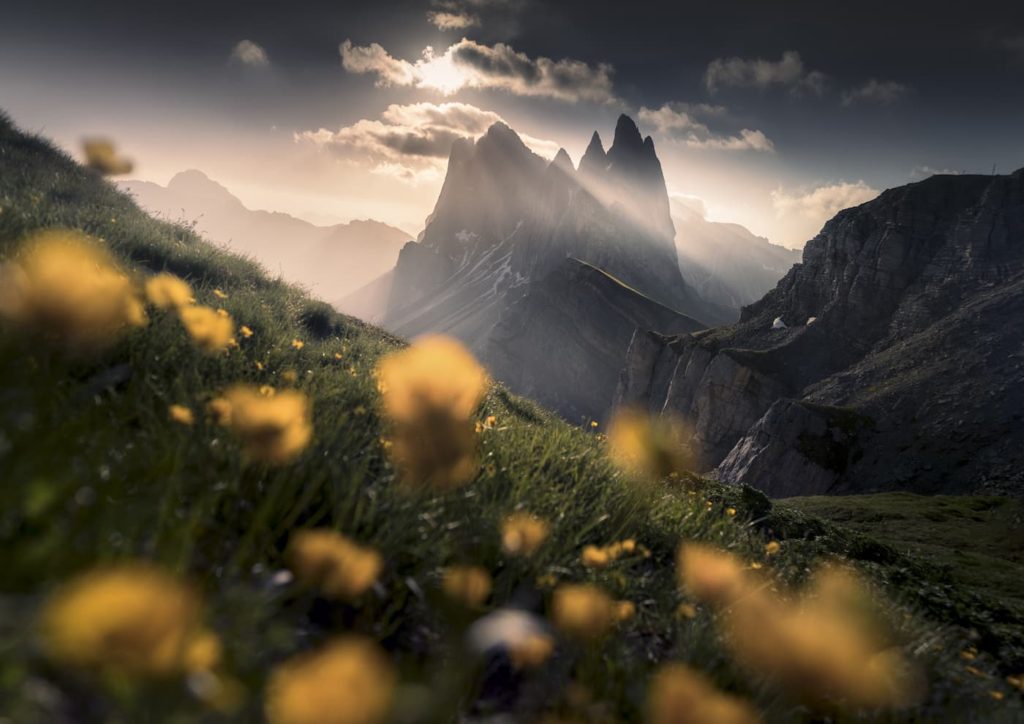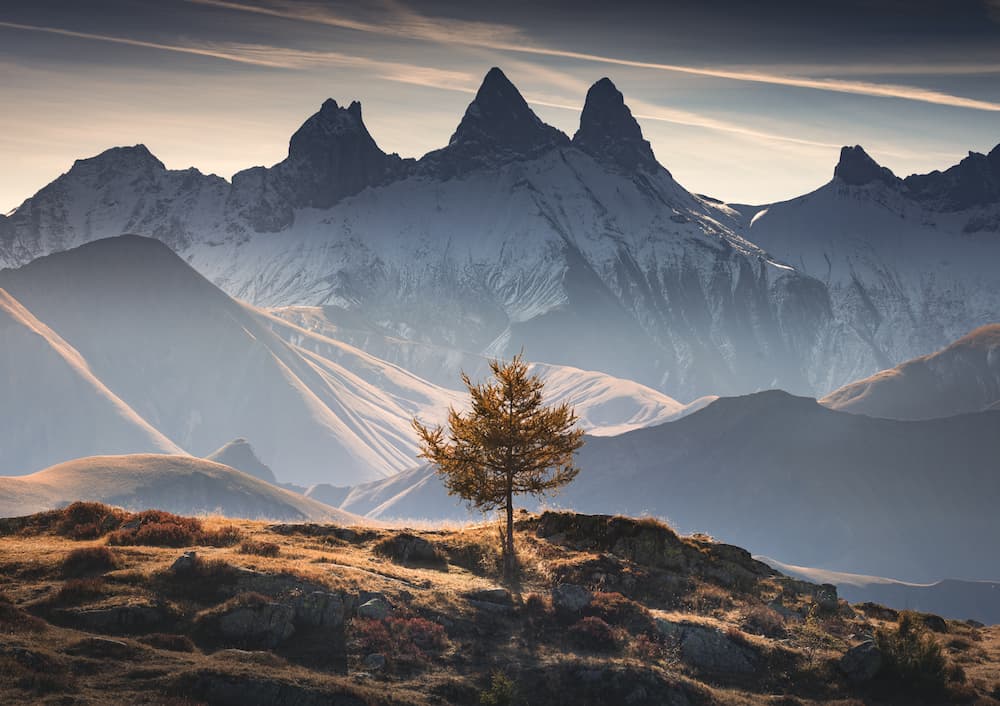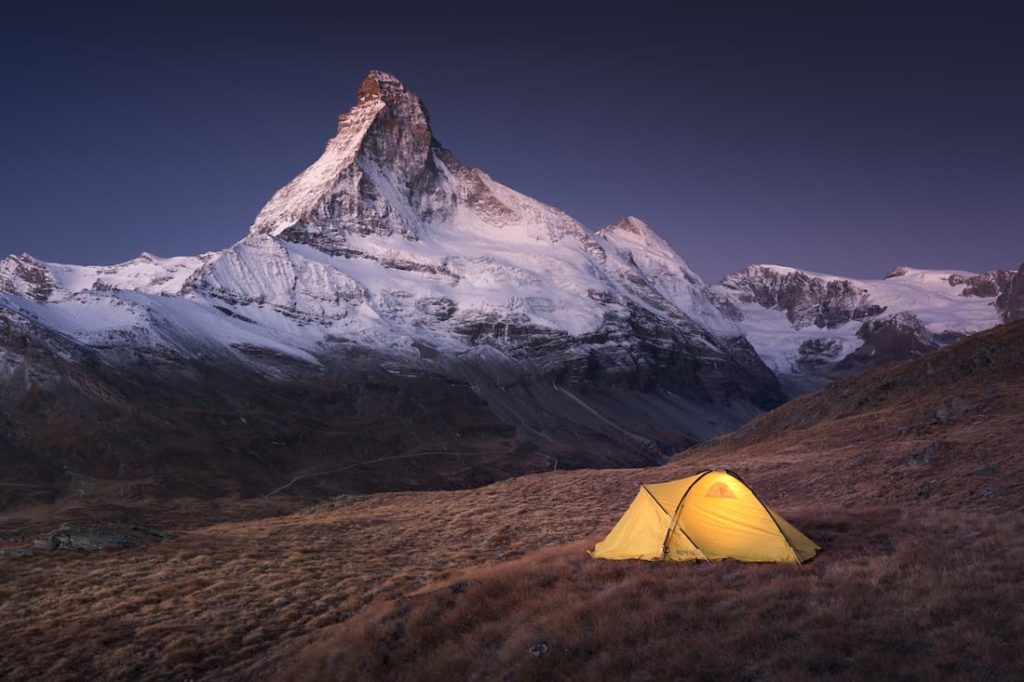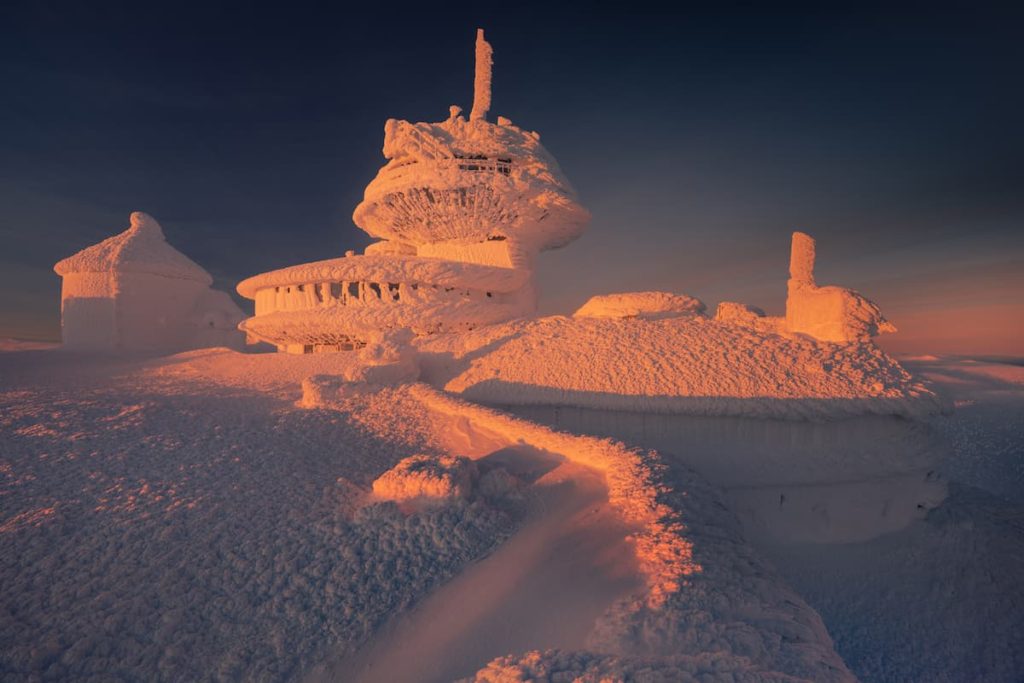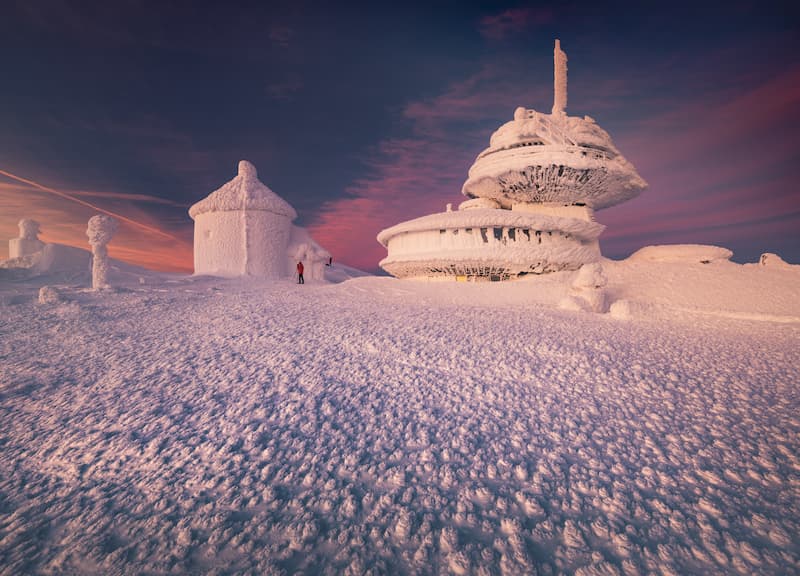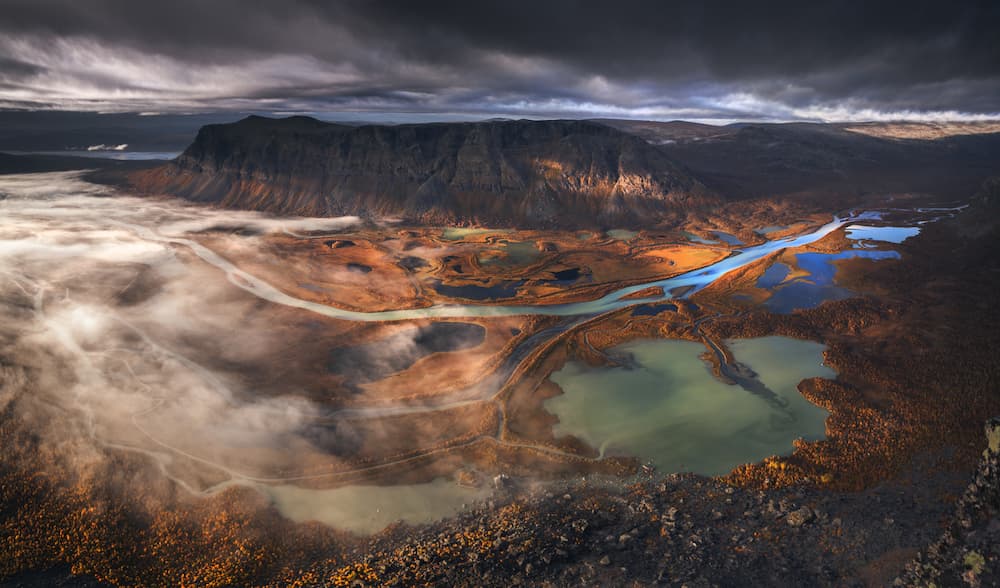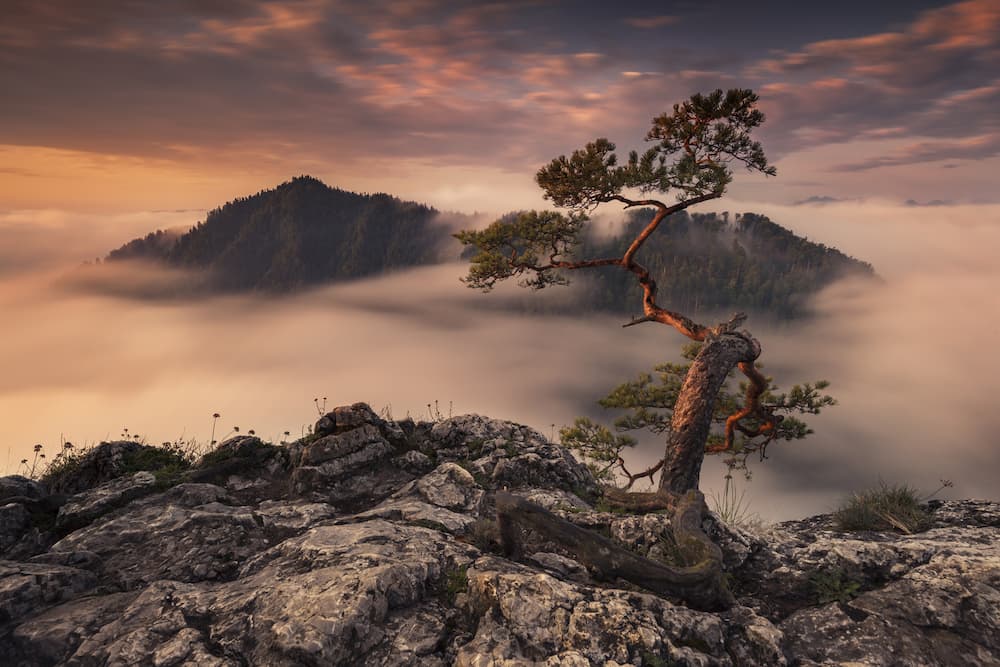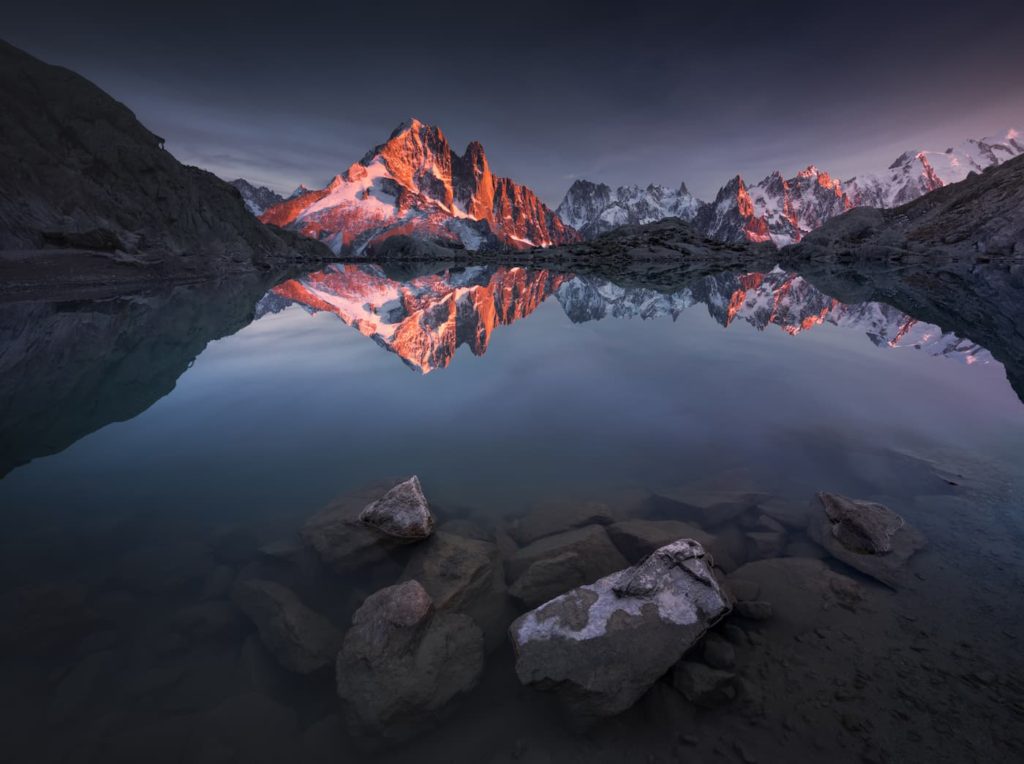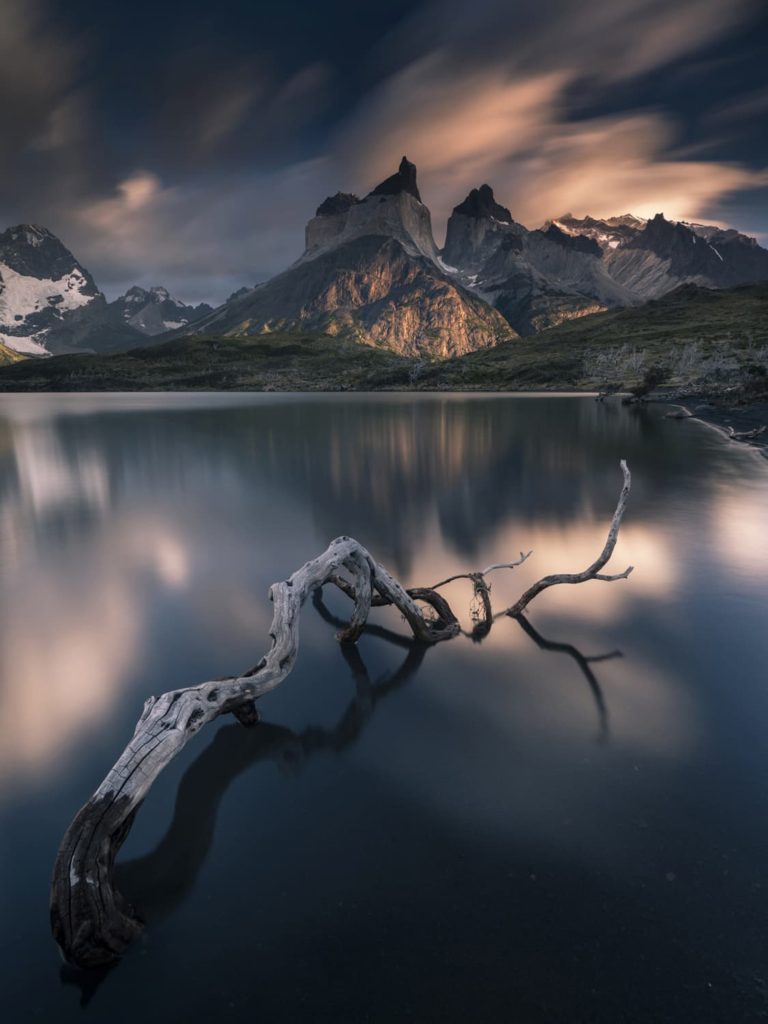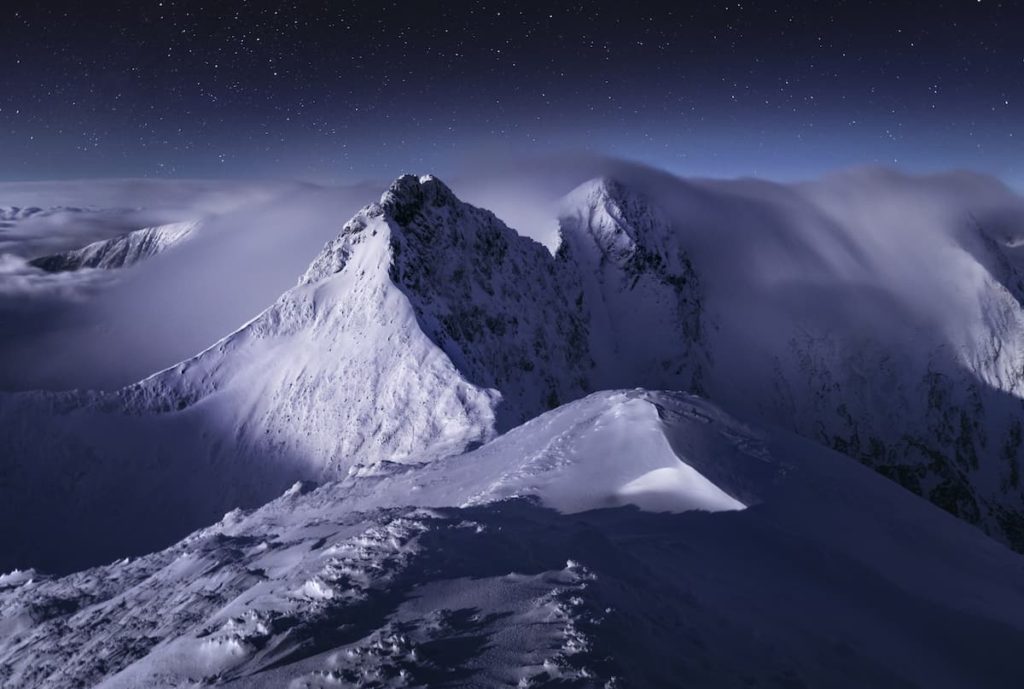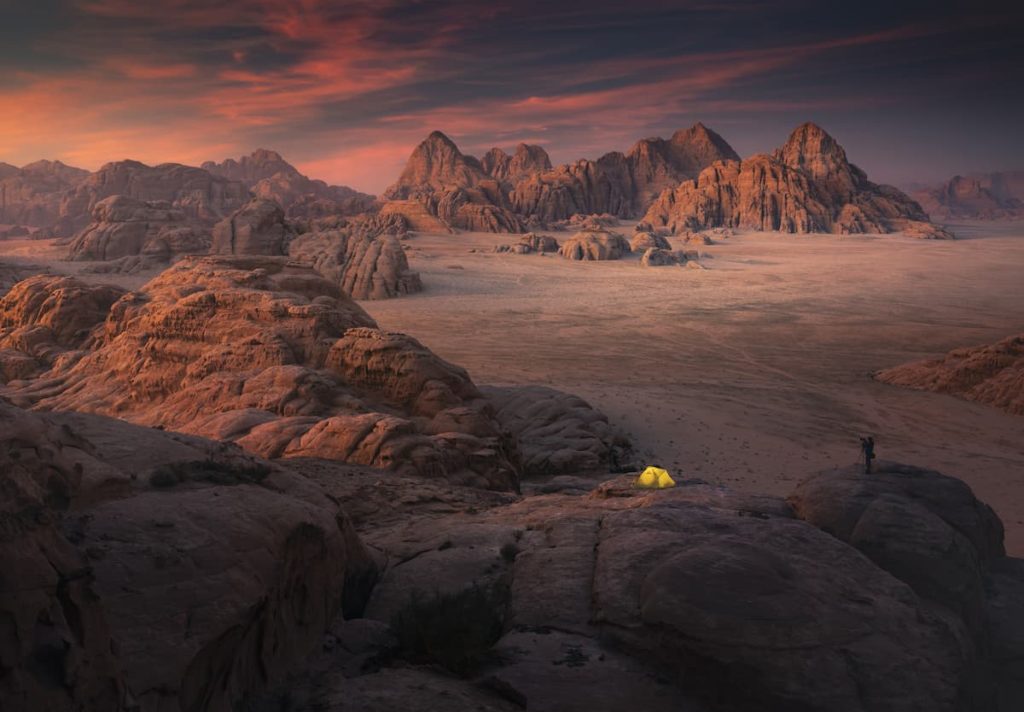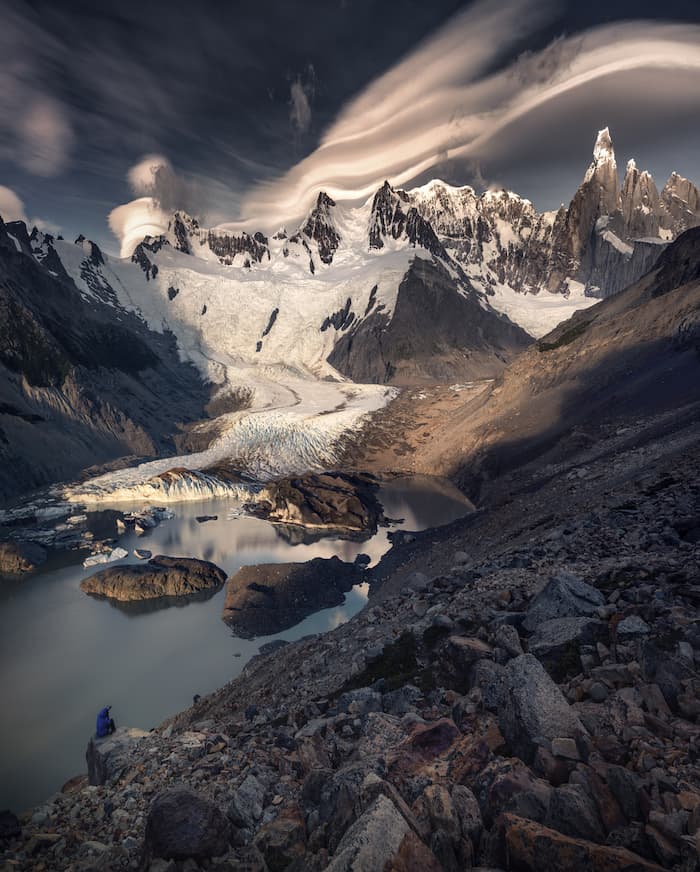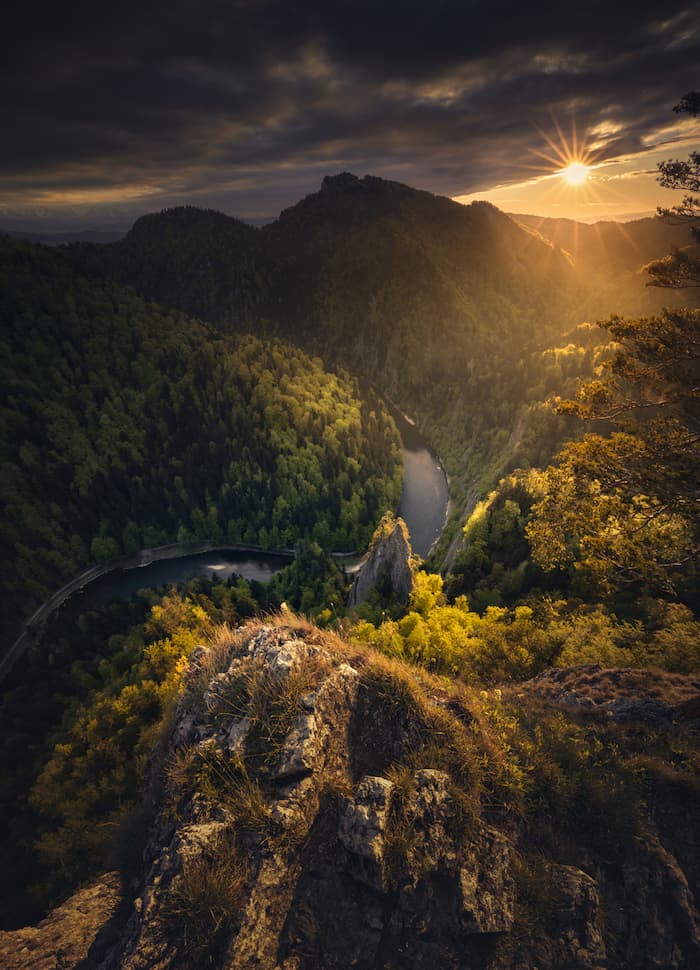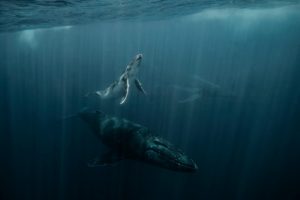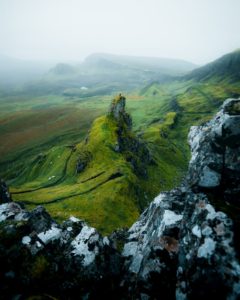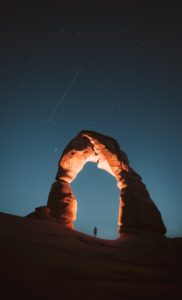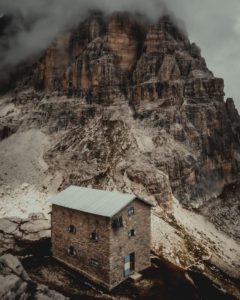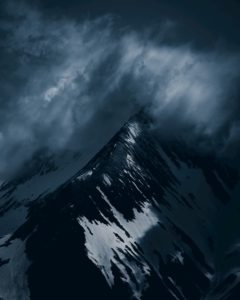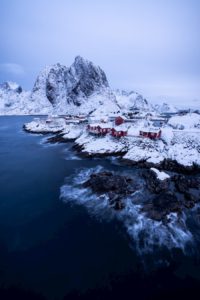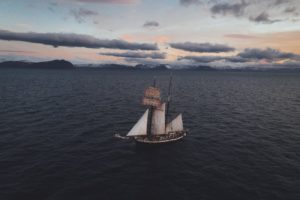
Karol Nienartowicz
@karolnienartowicz
Landscape photographer based in Poland
Introducing Karol Nienartowicz
Karol is a full-time photographer based in Poland. Starting with analog photography in 2003, he began combining his art with his passion for the mountains in 2009 and then turned his photography into his full-time profession in 2016. He specializes in mountain photography and has captured many different mountain peaks all over Europe and beyond. Within Poland, his home country, the Pieniny Mountains, Karkonosze Mountains, and the wildest region of Poland, Bieszczady Mountains, are among his favorite mountain spots.
Karol has achieved the best photos through fatigue, withstanding harsh conditions. Getting to know three photographs of mountain adventures he is most proud of was inspiring, and his mindset is also worth mentioning:
Karol searches for solitude and seclusion during his trips and finds himself camping on the lesser-known mountain peaks: “I have made several hundred camps in the mountains in my life. Cold and damp is my natural environment. I need an interesting place with a good view – it does not have to be comfortable and flat.”
Besides speaking about his adventures, he also talks about building a photography business. He mentioned that as a professional photographer, conducting educational and commercial activities on your own can be interesting – besides the standard corporate gigs. In Karol’s case, his work revolves around many small activities/products such as publications, e-books, workshops, meetings, calendars, or photo prints. It can be mind-changing to realize that there are multiple revenue streams a photographer can build and thrive on nowadays – besides commissioned work for clients.
Karol has been working on his brand for almost 20 years, and as a result, he has been published in the most important media companies in Poland and abroad, winning world competitions. In this regard, for Karol, personal branding has been a significant factor in turning photography into a successful business. Furthermore, staying adventurous, seeking new locations, and finding exciting compositions have been other key strategies in his career.
In the interview, Karol also shares his favorite mountain peaks, tipping points in his career as a mountain photographer, and gives away some of his inspirations and most valuable pieces of advice!
Interview
Welcome Karol! You have been photographing since 2003 and have evolved tremendously since then. At some point, you really began to focus on mountain photography. How did your interest in photography start and why do the mountains attract you that much to make it your main subject of photography?
I became interested in mountain photography when I went on a mountain trip for the first time. I grew up in the mountains – in the Karkonosze Mountains in Poland, but I went there only when I was already 18 years old. I took my camera with me for the first trip and it stayed that way. When I started, I used the USSR-made analog apparatus. For many years I photographed the mountains a lot, and finally, in 2016 I became a professional mountain photographer.
Coming from and being based in Poland, you have documented a lot of your country on camera. Poland is not that popular among landscape photographers. What can you tell us about your home and the places you enjoy the most visiting? For someone visiting from abroad, which photo spots would you recommend them to visit and why?
Poland is not appreciated in the world of landscape photography because lowlands cover a large part of my country. Mountains occupy only 3% of the territory. But despite such a small number, there are some interesting mountain ranges here. The most famous are the Tatra Mountains, which are the highest range of the Carpathians. The Tatras are referred to as the miniature of the Alps, because the landscape is very similar to that in the Alps, and only glaciers are missing (they used to exist here, but they are old times). There are many rocky and steep peaks in the Tatras, and several dozen blue glacial lakes. Some of them are as beautiful as the lakes in the Alps or Scandinavia.
"Polish mountains are not as popular as the High Alps, or those in Norway, the USA, or Patagonia, but you can also take excellent photos here."
Many photos showing Polish mountains are awarded in prestigious photo competitions. Many photographers will come to us, mainly from neighboring countries: Germany, the Czech Republic, Slovakia, and Ukraine, who have already discovered the magic of the Tatra Mountains and other ranges.
Among my favorite mountain spots, I must also show the Pieniny Mountains; small, but very picturesque mountains, with a great gorge of the Dunajec River. Many photographers from around the world should see the views from the peaks of Sokolica and Trzy Korony. These are some of the most perfect mountain views in Poland. I also like my home, the Karkonosze Mountains. My winter photos with the snow-covered meteorological observatory on the top of Śnieżka won many competitions, delighted many people from all over the world, and were published in prestigious magazines around the world as well. Finally, I recommend visiting the wildest region of Poland, which is occupied by the Bieszczady Mountains. This charming range of forestless mountain pastures is famous for its strong winds, which blow here almost as hard as in the Patagonian Andes.
With mountains being your main subject and having visited a lot of them in different countries, which mountains/trips were the most remarkable for you? What made (shooting) these mountains in particular so special?
I love all mountain regions in Europe and the world. In Europe, I like the French and Swiss Alps the most. I was especially delighted with the Alps in France, which are almost unknown in Poland (except Mont Blanc of course). Many Polish people go to the Alps every year because it’s close, but the western and southern parts of the French Alps are already very distant and few have gotten there. I also like the Dolomites because they are very graceful, but unfortunately too popular for photographers. My greatest discoveries in the mountains of Europe were the Scandinavian Mountains in Sweden (much less popular than the same range in Norway) and the Prokletije Mountains in Albania and Montenegro. I was also surprised by some of the less known mountain ranges in Spain – for example, the earthy gorges of the Bardenas Reales desert. Outside of Europe, I fell in love with the Andes. I especially like the Peruvian and Patagonian Andes. But there are still so many places waiting for me to be visited in the future!
On your website, you wrote: “I like to spend the night in a tent, usually in secluded or inaccessible places” (translated). How do you plan for a trip to the mountains, especially when sleeping outdoors in cold circumstances?
I have made several hundred camps in the mountains in my life. Cold and damp is my natural environment. During trips to the mountains, I always plan a trip to spend the night in an interesting place with a good view – it does not have to be comfortable and flat. It is important that the place for photos is first-class; I like to wake up in a place where I will be photographing. It is not always possible, but I try to choose places so that I can spend the night nearby. I usually know before the trip where I will be setting up my tent; I look for places in other people’s photos or find a spot with the help of Google Earth. Most camping sites do not require special planning.
For these trips, I use the Marabut expedition tent. It is a very solid and durable tent. I even slept in it on glaciers and it worked great. Furthermore, I use standard camping equipment: sleeping mats, Jetboil cookers and a down sleeping bag.
Clearly, you have developed your photography over the past decade and have grown as an artist. What have been some key points that boosted your growth and career?
There were some important moments in my job that were significant. The first was when digital technology emerged. In 2005, I bought my first digital camera which allowed for easy experiments with photography. I learned a lot then. Another important moment was the start of foreign travel in 2009. It was the first time that I started photographing further mountains: the Carpathians, the Alps, and so on. I saw more places in the world and I wanted to photograph wherever possible. So far, I have visited over 45 countries on 4 continents with my camera. The last big change was in 2016 when I became a professional photographer, meaning to photograph and earn money from it. When I was still working as a painter-animator in a studio in Gdańsk, I photographed a lot, but I had no time for promotion. Despite this, I made a lot of money with photography. So after I finished the film project, I decided to quit my job and only do photography.
"Thanks to the popularity of social media, I had no problem catching customers. I started selling photos, prints, doing courses and workshops, and then wrote a book."
In my case, I have also written a book on photographing in the mountains (Mountain Photo Expeditions, 2018), and several guides for photographers in the mountains in Poland and Iceland. This brings money that allows you to have the satisfaction of working as a photographer. Without money, there is no development, because high-level landscape photography is expensive. But every road is different. One earns on the workshop, the other on shooting sessions for sponsors.
Related to the question above, what challenges did you face at the beginning, and what are the challenges you face today with the genre you are shooting? Besides tons of practice, how did/do you deal with these challenges?
When I started, the problems were very simple. The main problem was poor photography equipment, and nothing better was available. There were no professional photo filters in Poland for many years – they had to be imported from Great Britain. There was also no access to knowledge because books on photography were still dedicated to analog photography. There was no Facebook and Instagram, no photo websites where someone could correct your mistakes… I had to learn from my own mistakes, and it took a long time. Times have changed, around 2007-2008 the equipment became better and access to professional equipment was easier. Today, when access to equipment is unlimited, this problem has disappeared.
"And if you want to learn photography, you have hundreds of YouTube channels, workshops, and photo tours offered by famous photographers. Everything just got easier, but that doesn't mean there aren't any new problems."
The biggest problem with landscape photography today is its enormous popularity. Every interesting place is crowded – even high in the mountains. People are rich, they travel a lot and want to photograph. The more popular places are crowded to the limit and the lesser-known places are no longer seen as Hidden Gems (because what’s a Hidden Gem if there are hundreds of people a day). Also, provinces and authorities impose more and more restrictions, close routes, and require registration. Today, to discover many beautiful places, you need to book many months in advance, knowing the exact date of your stay. You need to get ahead of thousands of other people who also want to book entrance for the same period. It has become completely crazy and eliminated the spontaneous traveling that I love. It is a global problem, less in Europe and Asia and more in North and South America. To enter the interesting trail in the Rocky Mountains you have to book the entrance many months in advance, so even in the mountains, there is no freedom. Landscape photography depends on weather conditions – they cannot be predicted even a few days in advance. With the mandatory entry reservation, you have to reserve for a senseless amount of time or have a bag of money for it.
As a photographer, besides doing photography itself, you have worked with several clients, offer workshops and lectures, and have created a book. According to you, how can one make a sustainable business out of photography, and what is in your experience the best way to find and close deals with clients?
My photography business is based on my name brand. Karol Nienartowicz is one of the most famous photographers in Poland. I have published in the largest media in Poland and abroad (newspapers, television, websites), I have won world competitions. In a year I am celebrating the jubilee of 20 years of work as a mountain photographer – this is a lot of time in which I have worked on my brand. When you have a name established in the community, it is much easier.
My business is based on many smaller businesses: books, publications, e-books, workshops, meetings, calendars, photo prints, and more. I do not work on commission. I do not make photo sessions on request. I only sell finished products. I acquire clients through my channels in social media and the online store.
You have your own shooting style, from composition to editing. In many of your photos, despite the “cold” environment, they always have a warm glow. Looking back in time, what do you think helped develop your style? Could you share with our readers a before and after and explain shortly the essential steps you take in your editing process?
In my opinion, the style of photos always evolves a little out of control. Other photographers whose work we admire have a great influence on us. Before 2010, my perception of photography was influenced by the Czech analog photographer Karel Hnik, who photographed Karkonosze Mountains. Later, I admired the style of Xavier Jamonet and Max Rive, who shaped my view of landscape photography and photo editing. My photos are very often panoramas stuck together from several photos. Thanks to this, I am able to show a wide perspective that would be impossible in one photo. The composition of many of them is interesting by combining many photos that show a space of 180 degrees.
Photo editing is all about creating a mood that is different for each photo. It is impossible to discuss common actions for all photos because each is edited individually depending on the mood, frame, and composition.
This may be a complicated question, but could you share with us three photos you are proud of? Can you tell us why you select these photos specifically?
1) Night view from Wołowiec in the Tatra Mountains. It was one of the most difficult sessions of my life. I walked to the top for 8 hours in fog and falling snow. Near the summit, I almost lost my way when I entered the dangerous terrain. I spent the whole night at the summit, in frost and hurricane winds. The clearing up was only a few dozen minutes, and most of the night it was foggy. I only got a few shots.
2) The first trek in Jordan’s Wadi Rum desert was a real challenge. We hiked 80 km with huge backpacks. Inside, we had 12 liters of water, camping equipment, food, and whatever was needed to survive in the desert for a few days. We set up a campsite at one of the rock bridges, from which we had a perfect view of the mountains. The photo I took then has a very strong sentiment for me.
3) The most beautiful lenticular cloud in Patagonia. Although the sunrise was unsuccessful, miracles later happened in the sky. The lenticular cloud heralded a hurricane wind and a change in weather.
Nowadays we see many young photographers pursuing a career as landscape photographers. To finalize the interview, we would love to know what four pieces of advice you would like to share with them.
One: Look for original places that are yet to be discovered. Look for adventure, not just easy street locations.
Two: Watch other photographers, but do not mindlessly copy their style. Look for your own point of view, original composition, and editing character.
Three: Build a brand of your name. If you have the talent and you can cut through the crowd of others, you will be able to start a photography business.
Four: Be persistent and patient. Don’t expect quick success. It takes years to build a career as a landscape photographer. For this you need many trips, hundreds of photos and thousands of hours in which you will get cold, get wet and have doubts. But the reward is great because you will be able to have real satisfaction in what you have done. The best photos are those that require the most fatigue from you.
Would you like content like this sent to your inbox?
